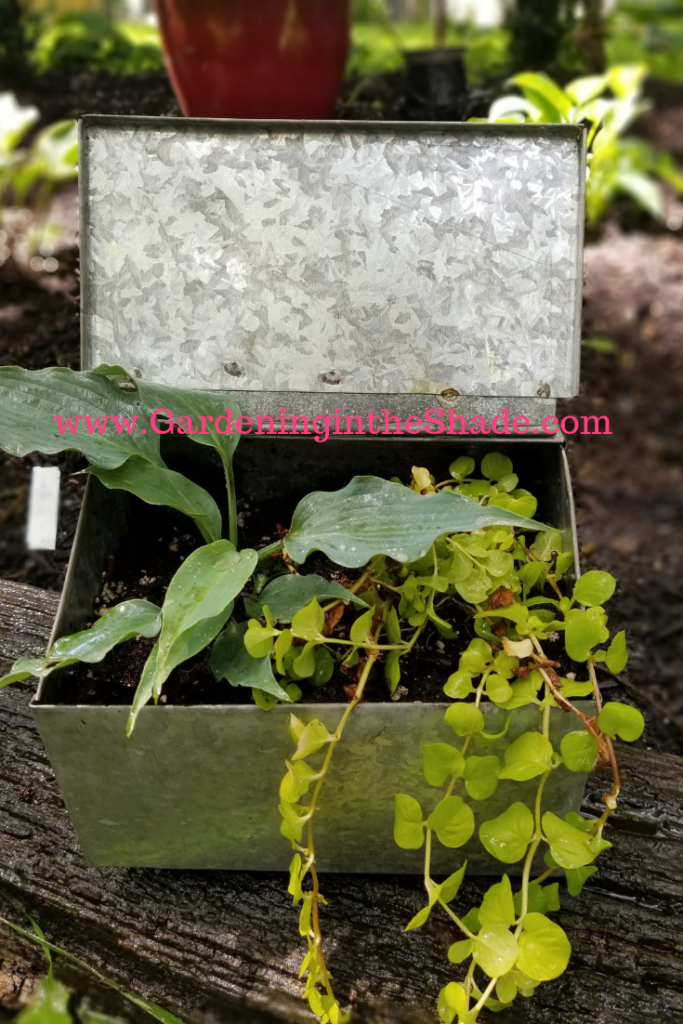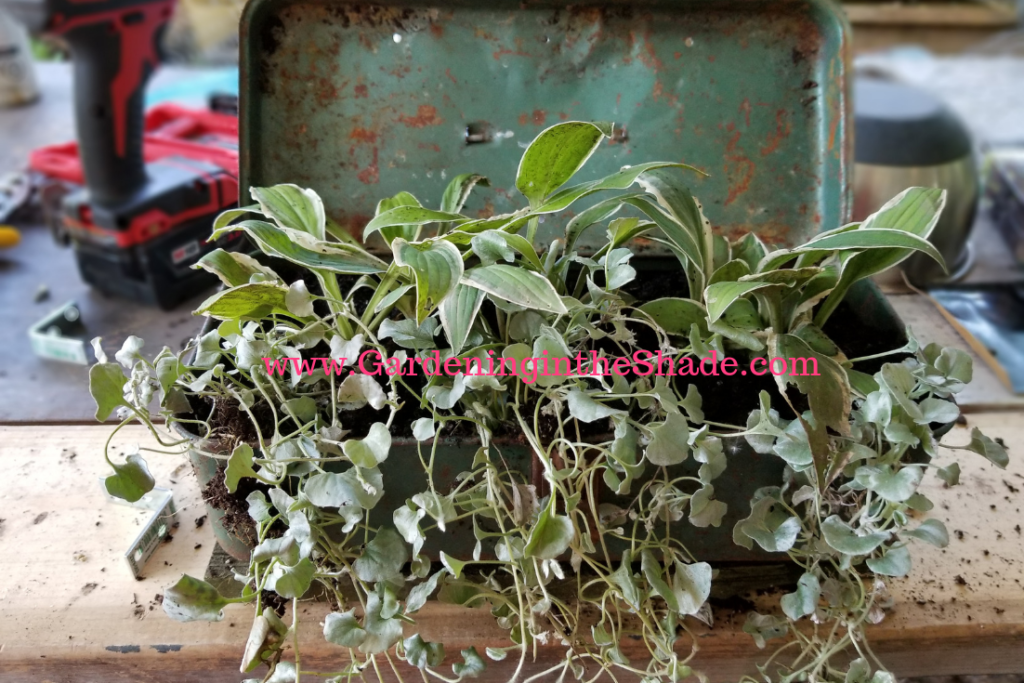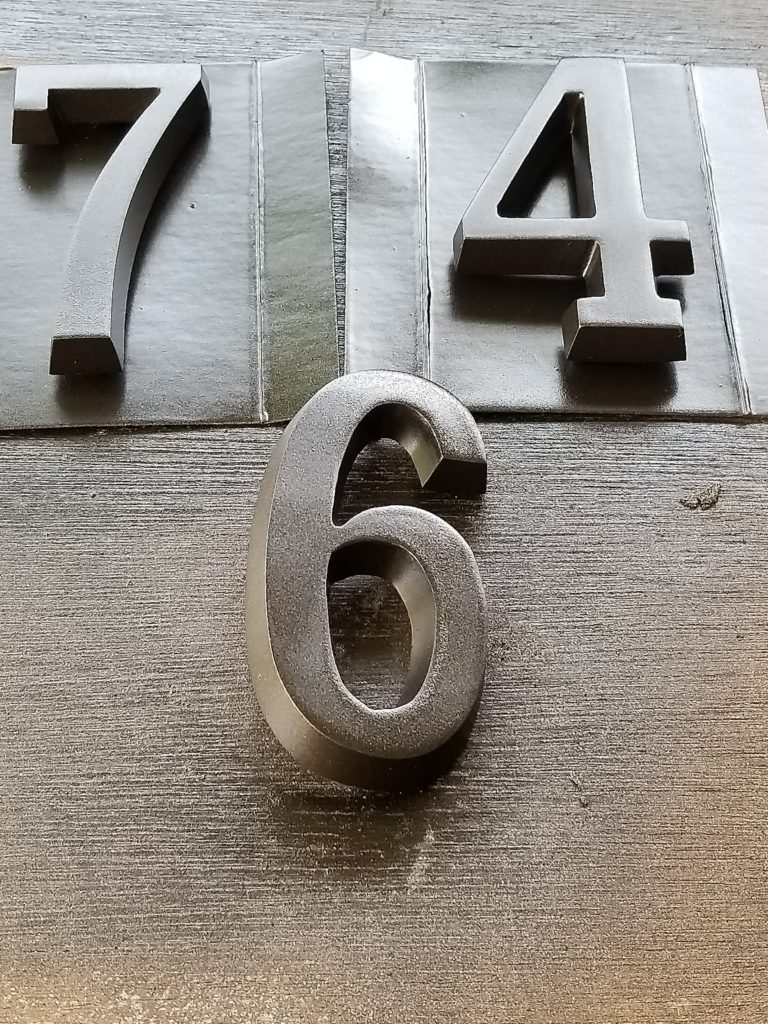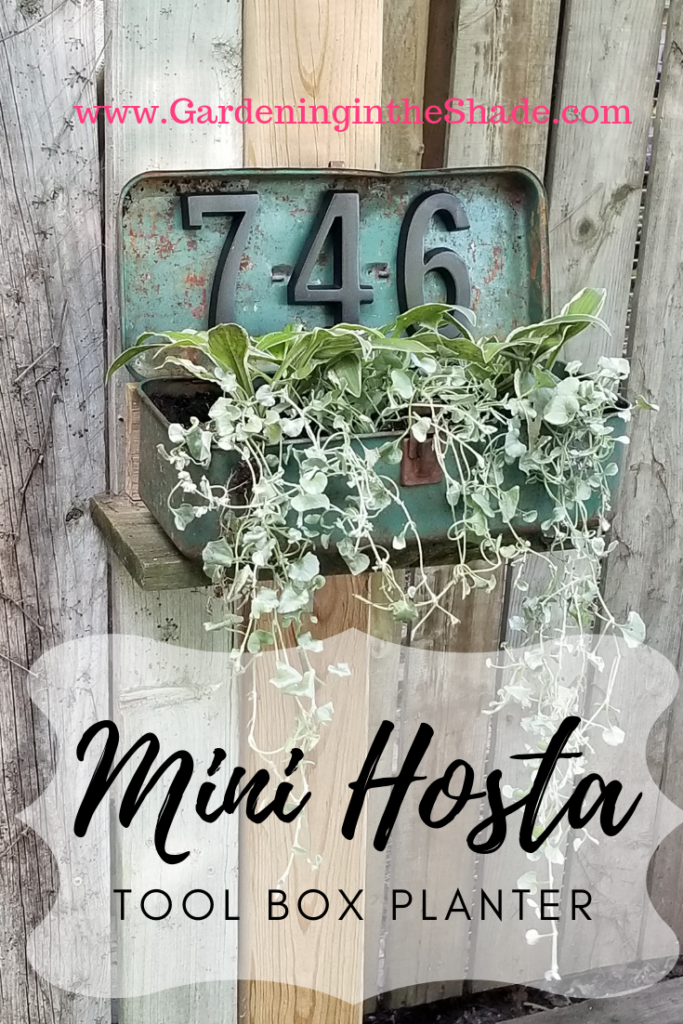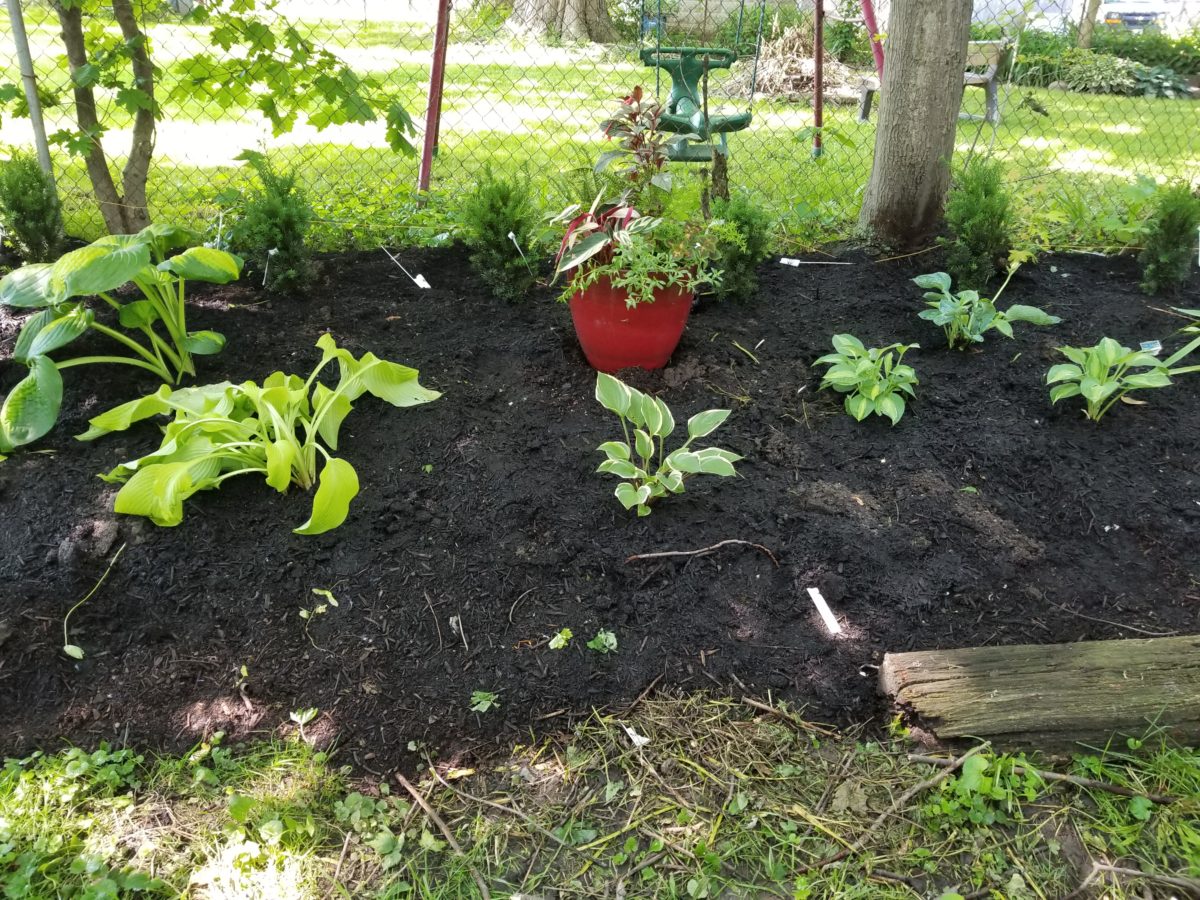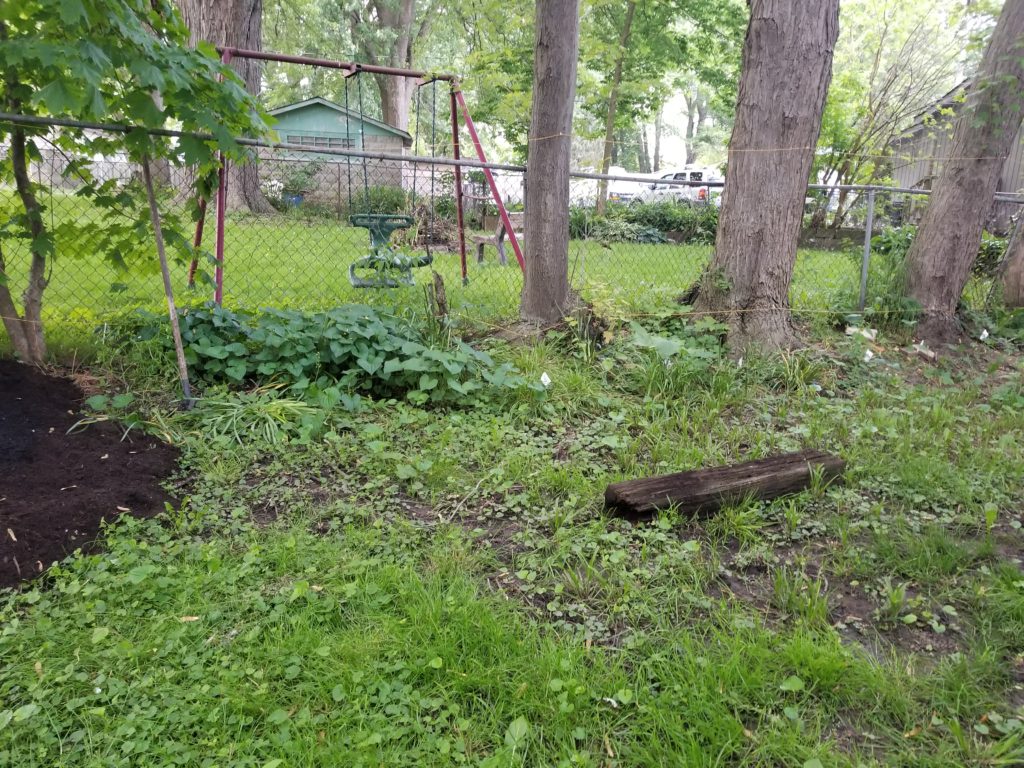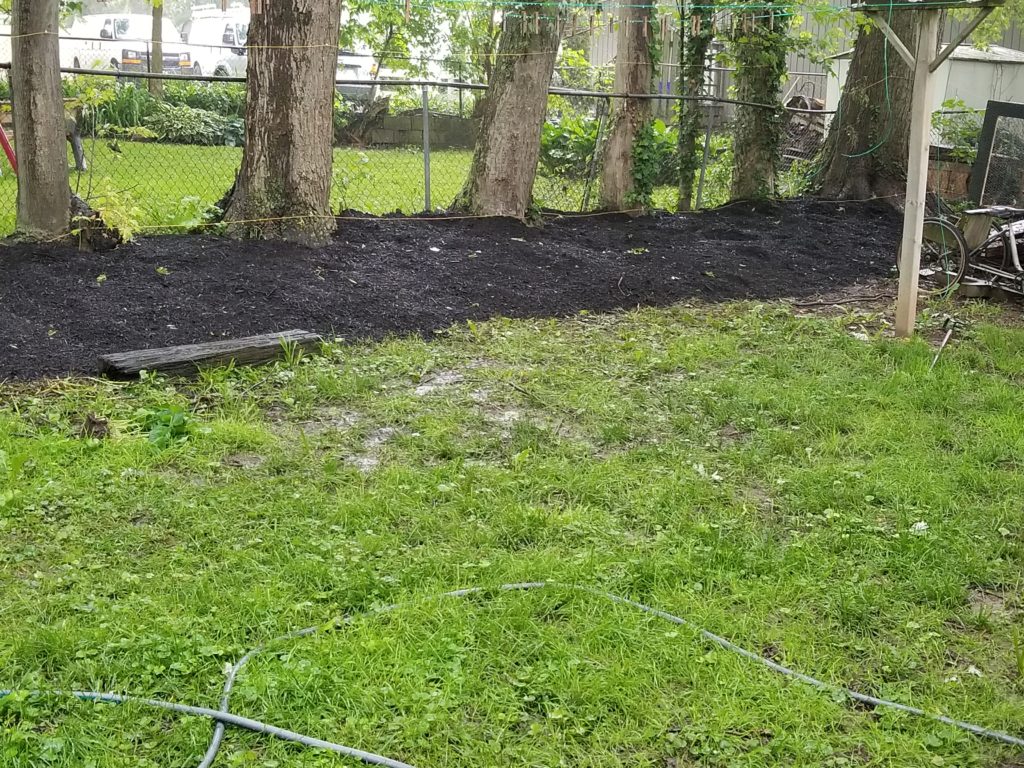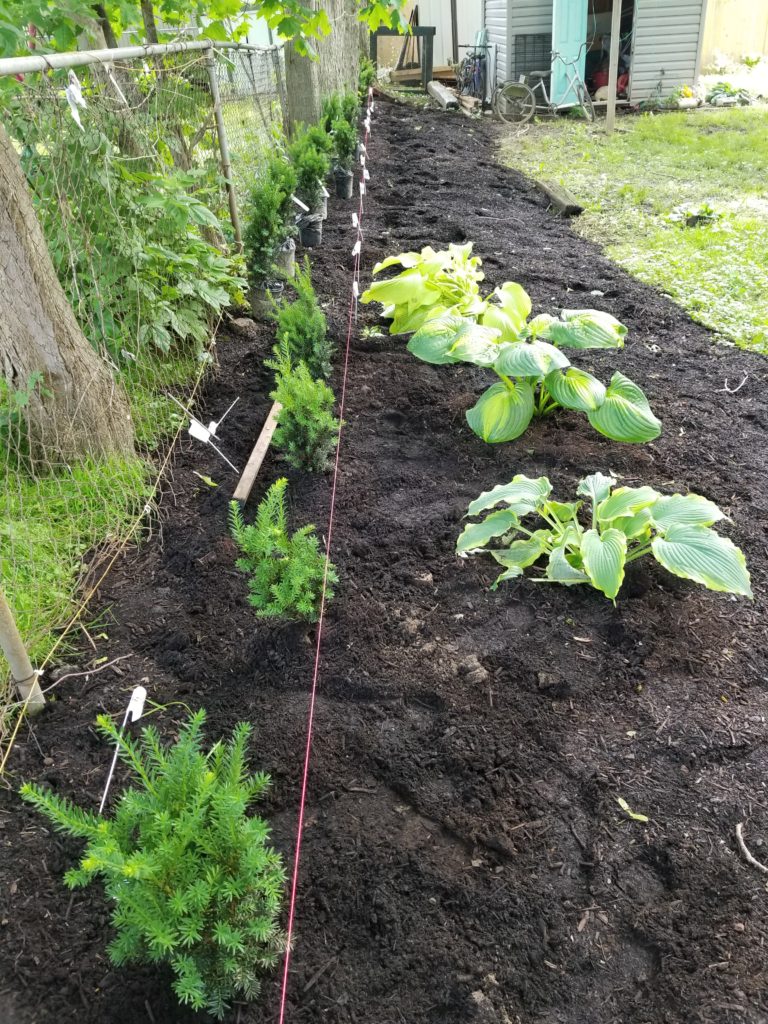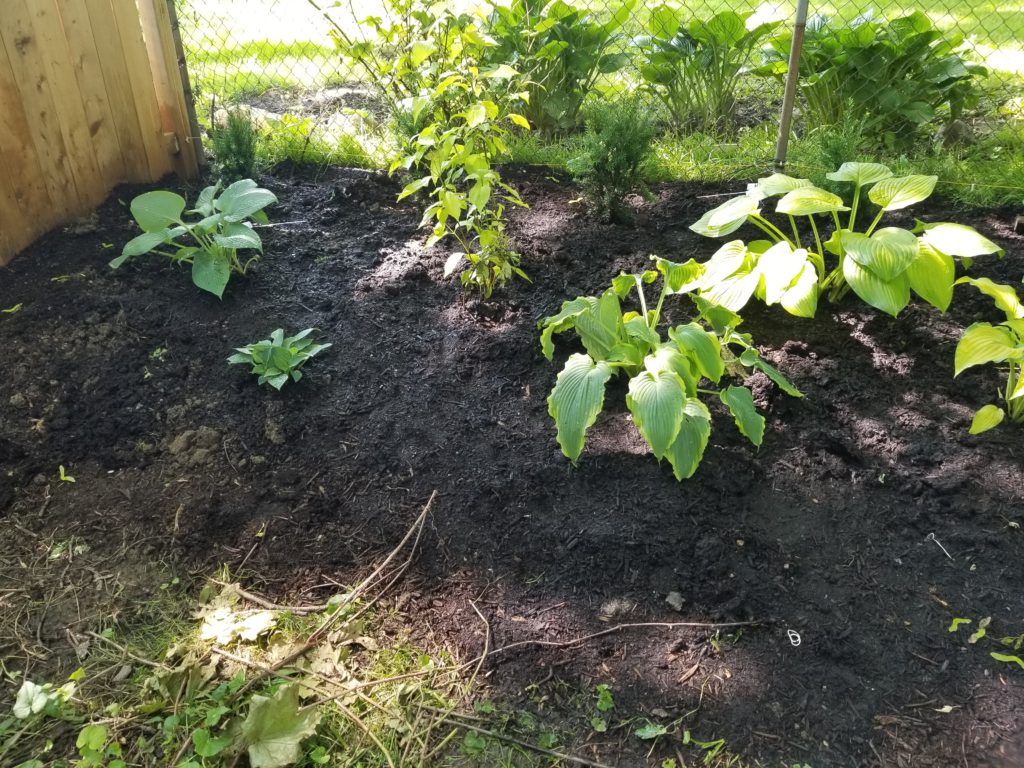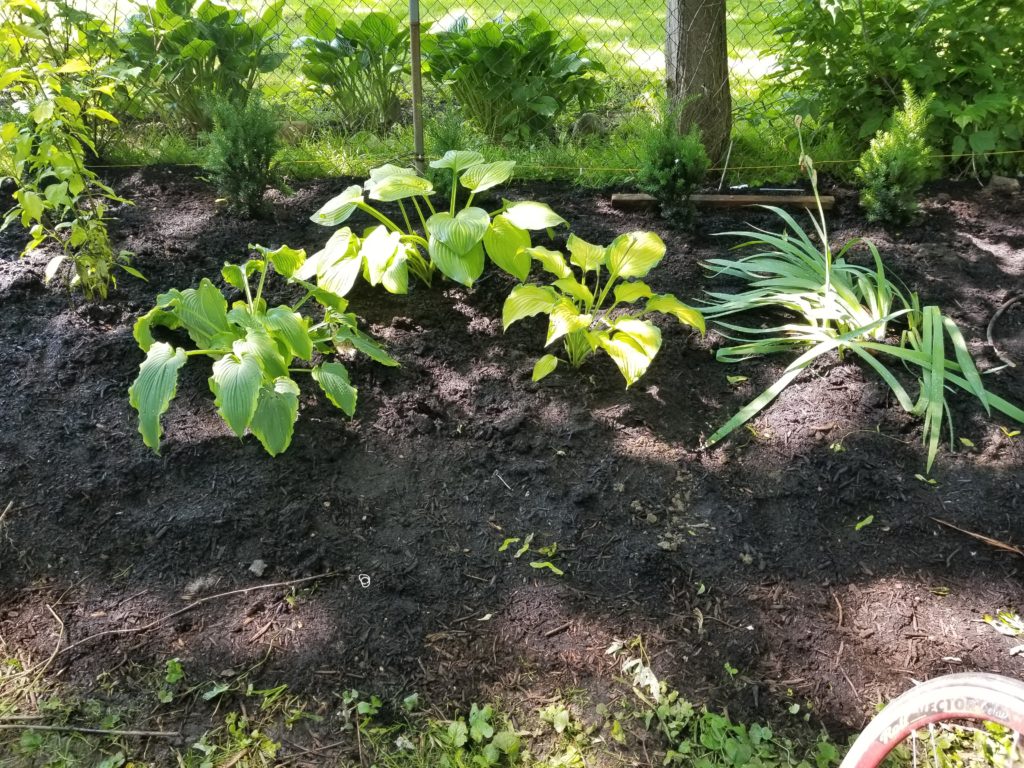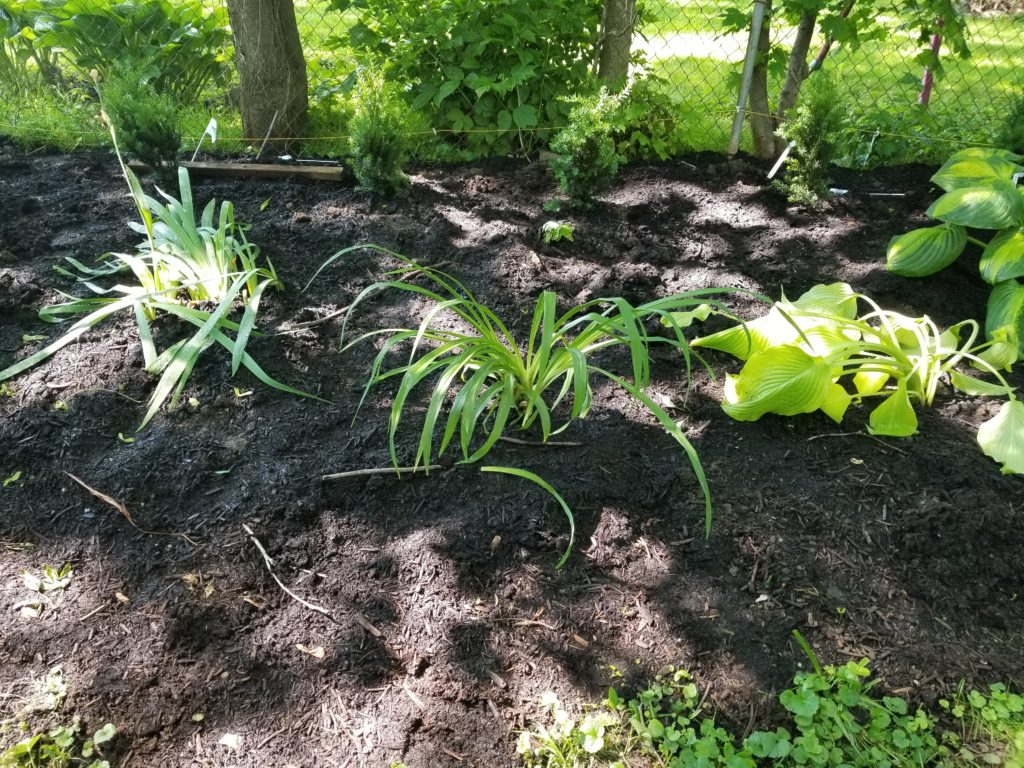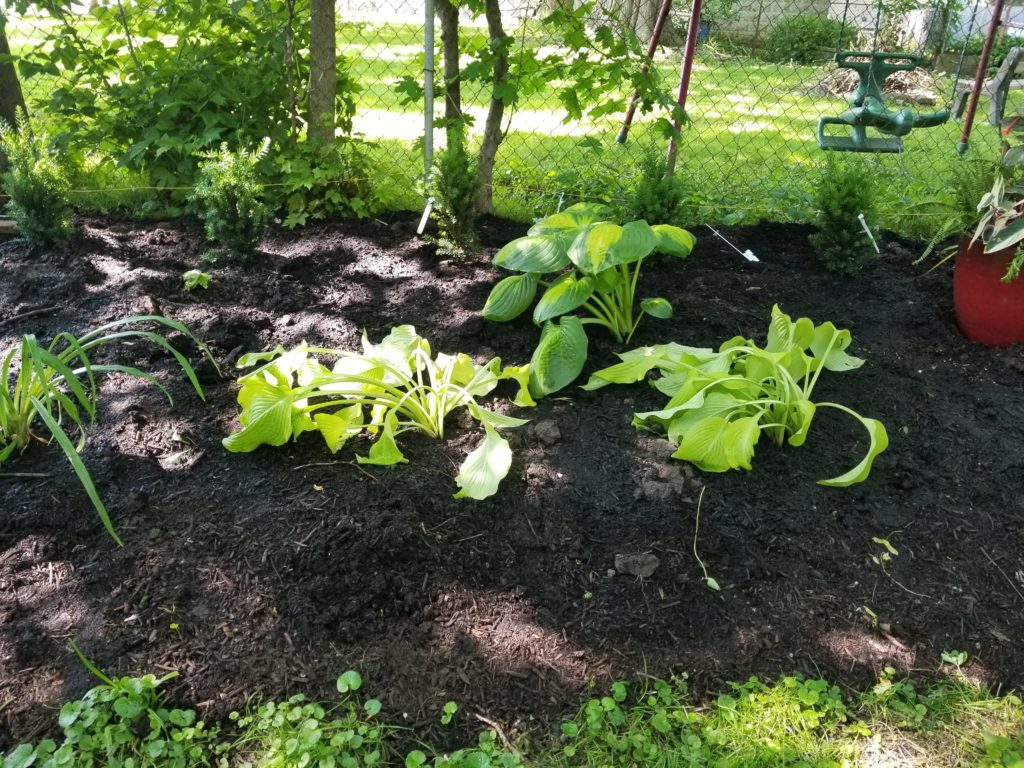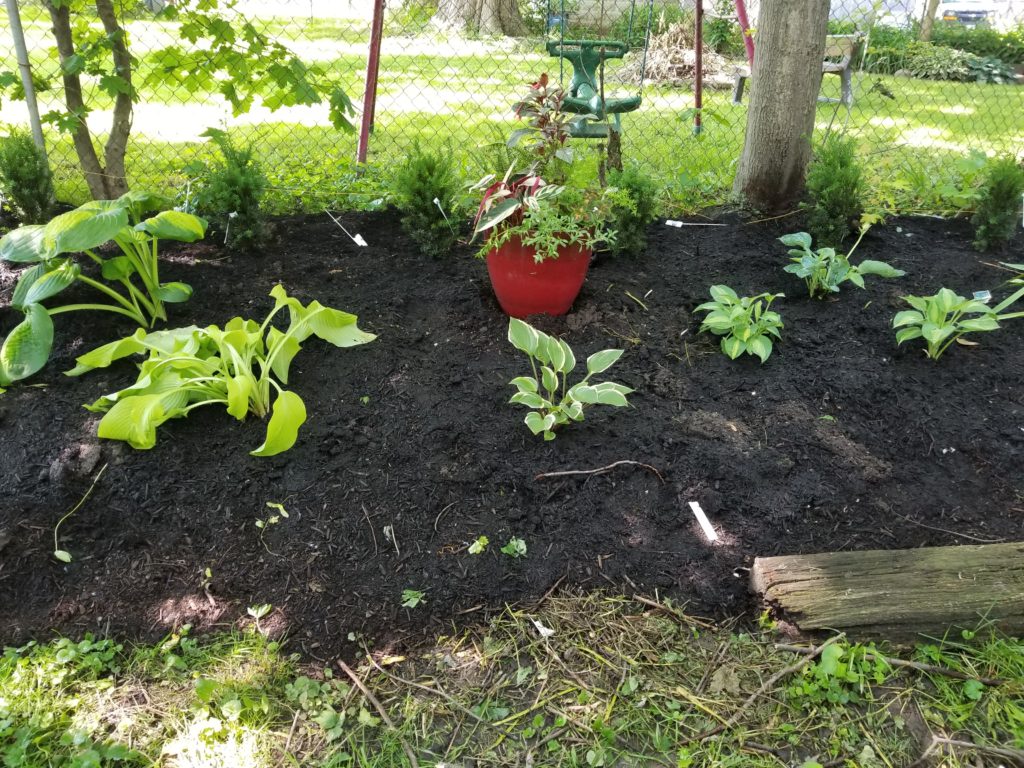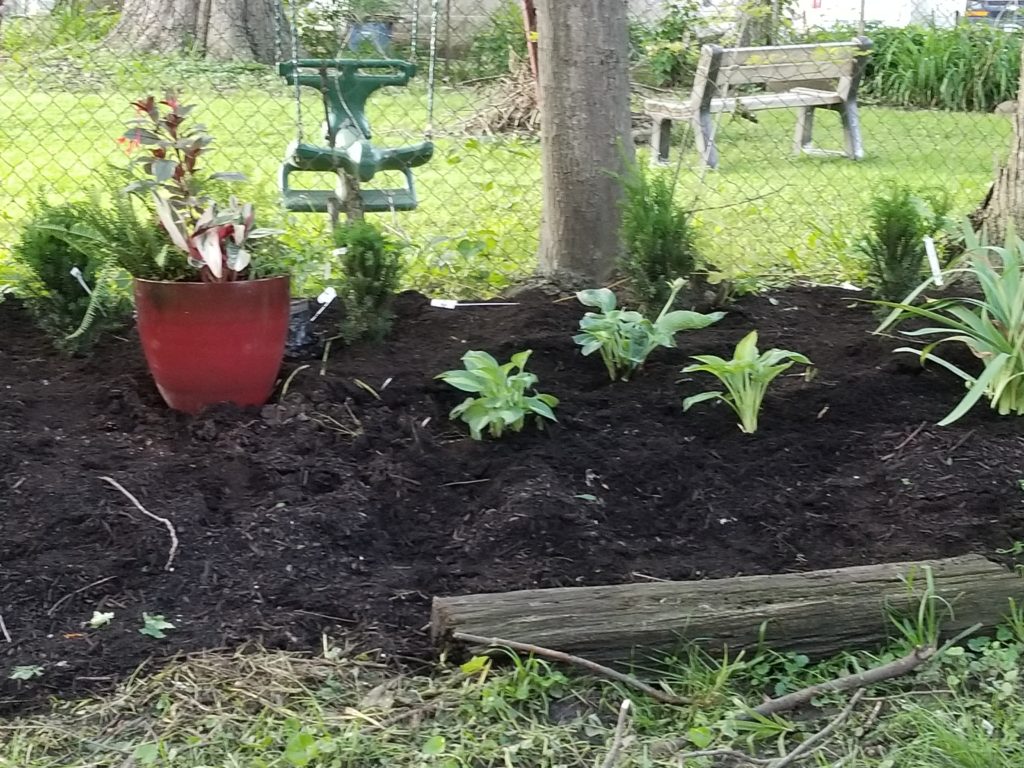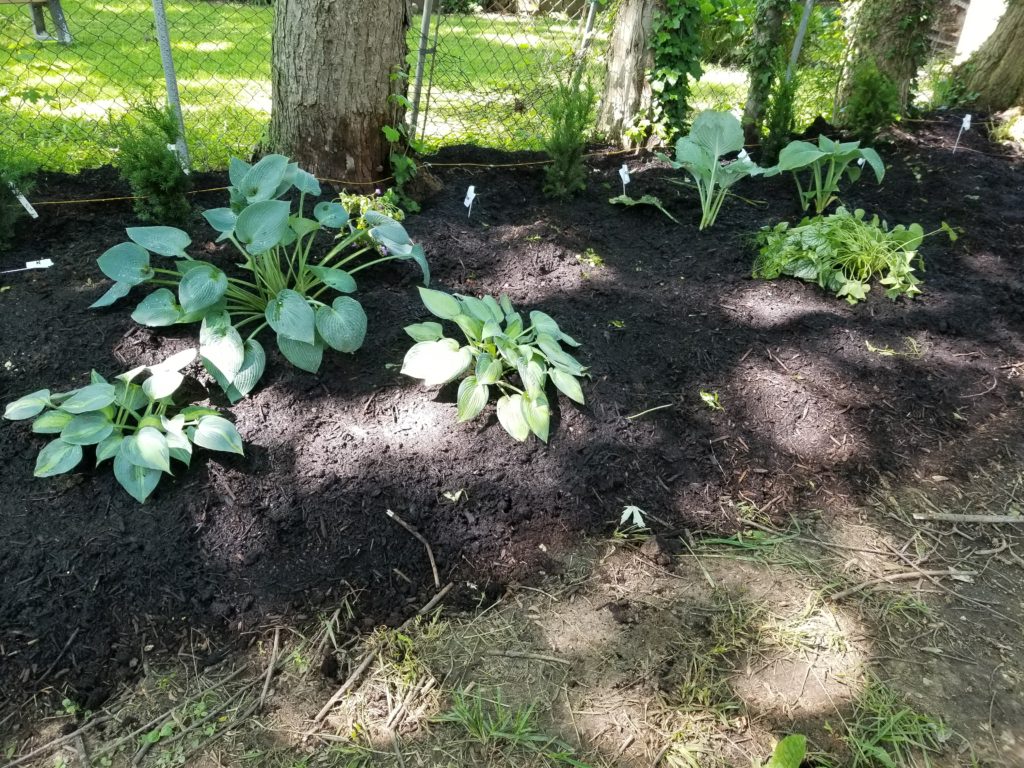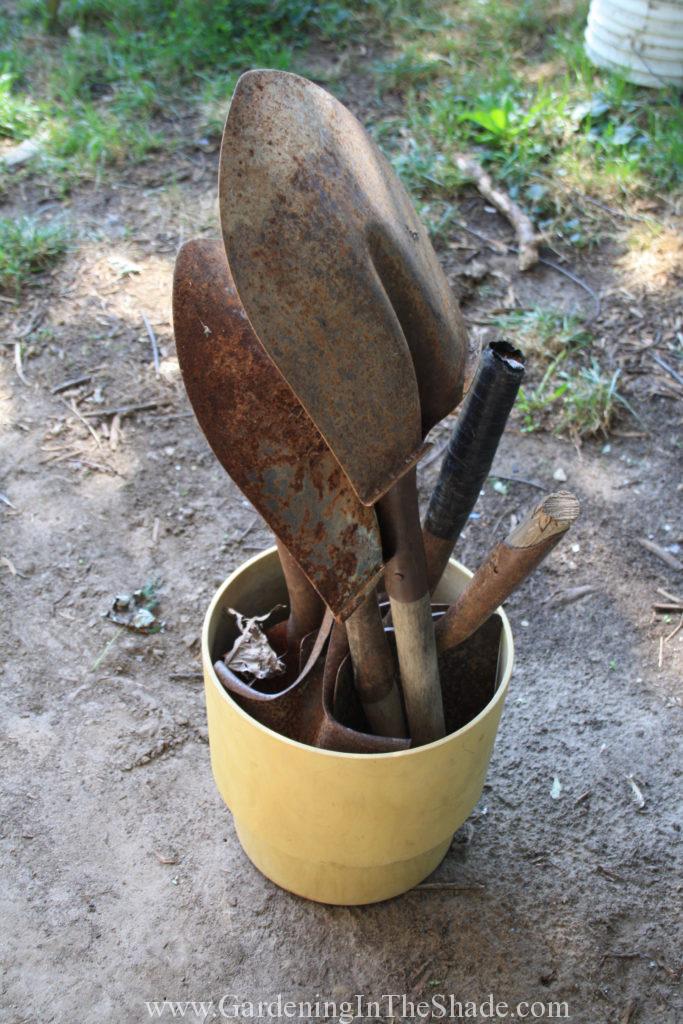
It’s hard enough to find a use for one broken shovel, never mind six of them. But I did! I made a broken shovel waterfall with them, no welding necessary! Let me tell you how I did it because it is so freaking amazing I hardly believe I made it.
The Idea
We have a problem in my neighborhood with irresponsible dog owners leaving their dogs outside to bark. After 4 years of it I finally called by-law enforcement which has diminished the problem some. The problem is after being annoyed for so long, it’s almost impossible to ignore even reasonable barking.
Planting the hedge was step one in my efforts at noise abatement. But since it will be a few years before the hedge is big enough to pull its weight, I decided a water feature would be step 2. I wanted the tinkle of a water feature to help distract from the barking. Except it had to be unique, it had to be DIY, and it had to be amazing. Nothing I saw on the internet was working for me, and then I remembered those broken shovels!
The Broken Shovel Waterfall
Every waterfall has three main parts. A reservoir or basin of some sort to hold the water, something for the water to spill over, and a pump.
 The Basin
The Basin
I considered using a buried reservoir, but decided a disappearing fountain wasn’t what I wanted. An old galvanized wash-tub would have been lovely but they are rare to find and expensive when you do see them. I’ve seen a shovel waterfall on Pinterest that uses a wheelbarrow, but that wasn’t for me either. In the end I decided on a hypertufa trough.
That was hiccup number one. I had searched on the internet a bit, saw others used hypertufa for water features and assumed all would be well. Except hypertufa is very porous and water would only stay in my trough for a few hours at best. For now I’ve solved that problem by putting the plastic bin I used for my form back in the trough. I painted it gray to make it less obvious – I think I would prefer it black.
 The Waterfall
The Waterfall
My next issue was how I would support my shovels for the water to spill over them. I considered a few options like old bi-fold doors or building a fake picket fence. My main fear was that if I didn’t choose wisely, my broken shovel waterfall would look like I tried to throw every project ever seen on Pinterest into one. In the end I decided a simple arbor was the way to go.
I dug the holes for the posts on Saturday, despite a heat wave that had the ‘feels like’ temperatures flirting with 100. There were also biting flies, vicious mosquitoes, the stickiest mud I’ve ever seen and a thunderstorm. I got a blister even. But the holes were dug and the arbor assembled.
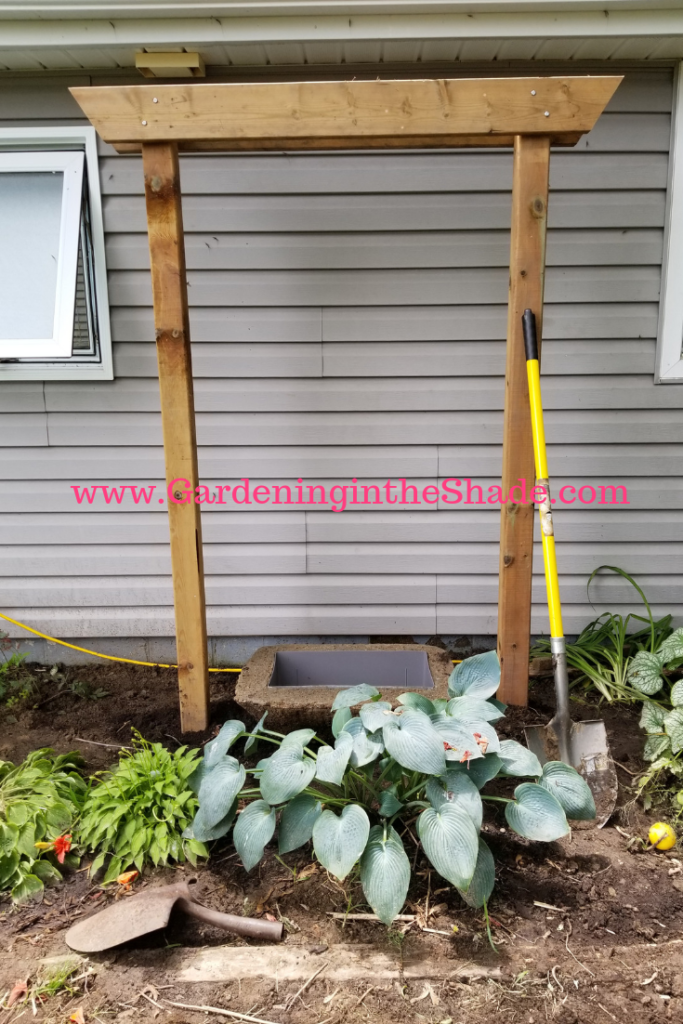
On Sunday, my youngest helped me get the arbor up. After everything was level, we just tamped soil around the posts. Next was attaching the shovels. It took me a long time to come up with a way to attach the shovels. At one time I considered removing the old handles and replacing them with dowel. Removing the handle from a shovel is not an easy job so I was happy to not need to do that. I used pipe hangers instead, the shovels balance in them perfectly.
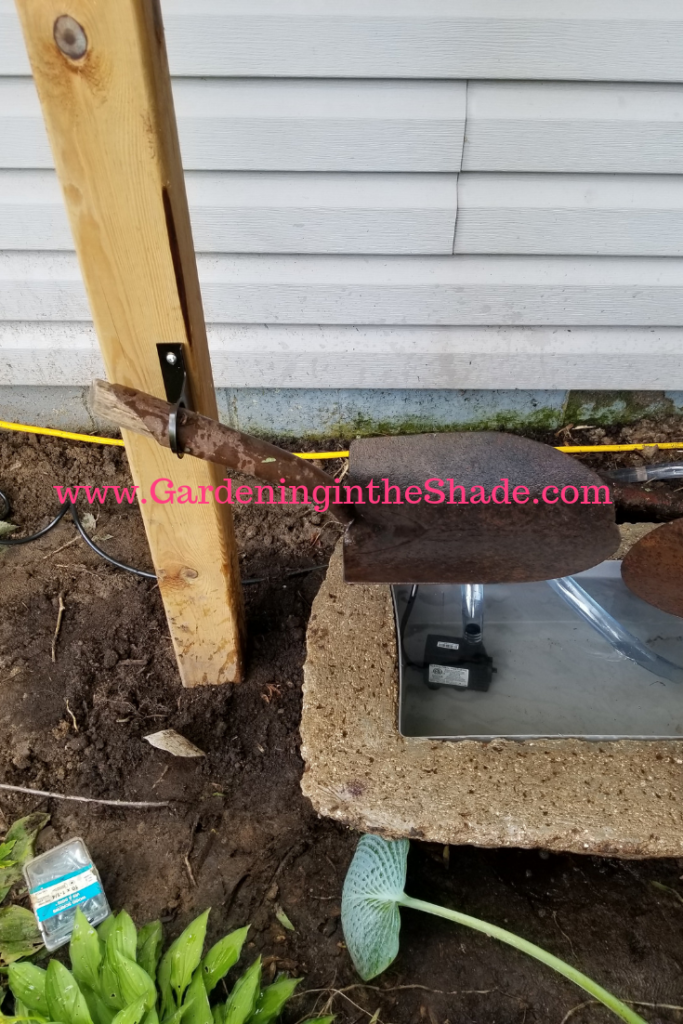
I first tried attaching the shovels to the front of the posts. The problem with that was they weren’t long enough to have the water spill from one shovel to the next below.

I solved that problem pieces of 2 x 4 on the back of the post. It works out perfectly and keeps the shovel from listing to the side.
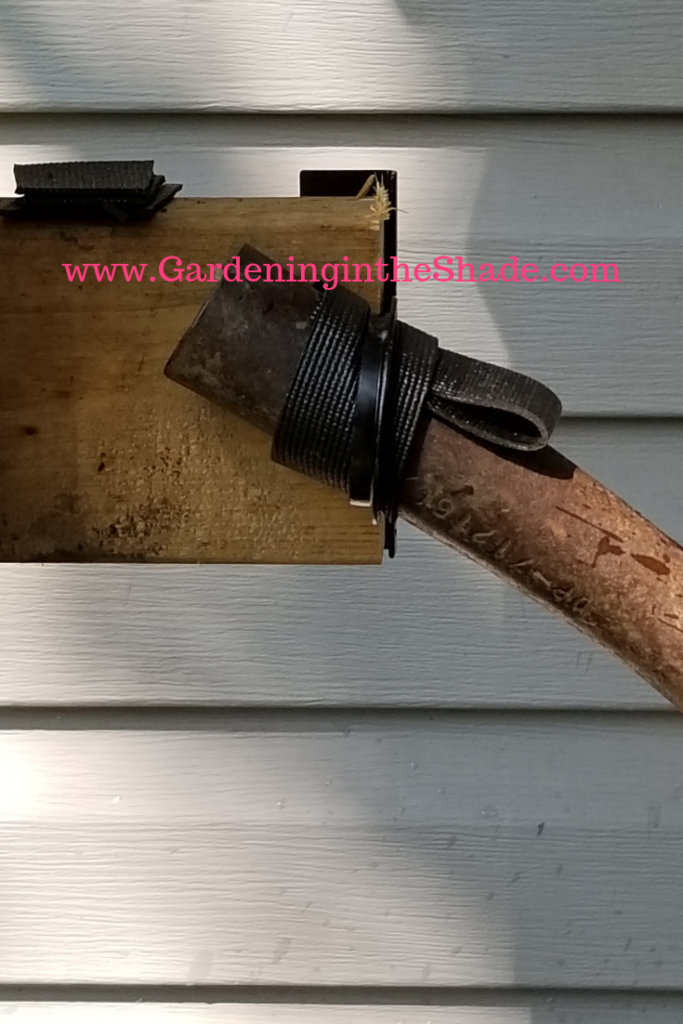
I used pieces of black shelf liner to stabilize and ‘tune’ the shovels so the water would fall from one to the next below.
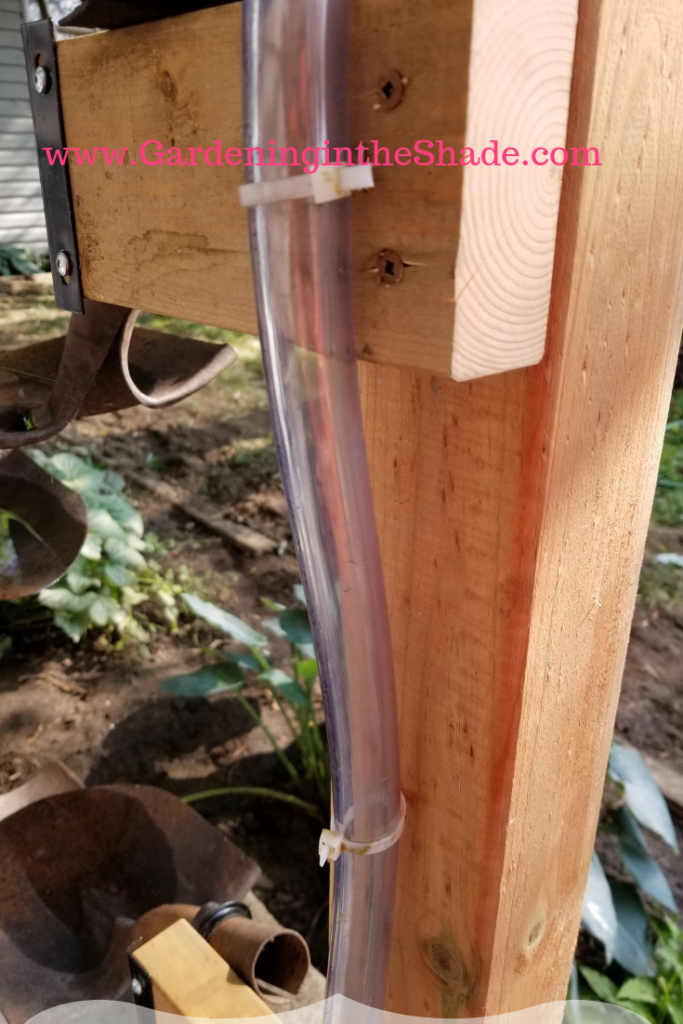
The tubing needed for the pump was a bit of a disappointment. I hadn’t realized it would be so large and hard to hide. It is attached to the back of the post with zip ties that I stapled to the post.
The pump
I used a pump that was rated for 5 feet of lift. I wish I had gone with the next size down even though it was only rated for a 3 feet of lift. This pump just had too much water flowing through even at its lowest setting. I’ve had the pump since the end of May so there’s no returning it. Rather than buy another pump, I cut a small hole in the hose below the water line. This lets some of the water divert right back into the basin and reduced the flow to a better rate.
Broken Shovel Waterfall
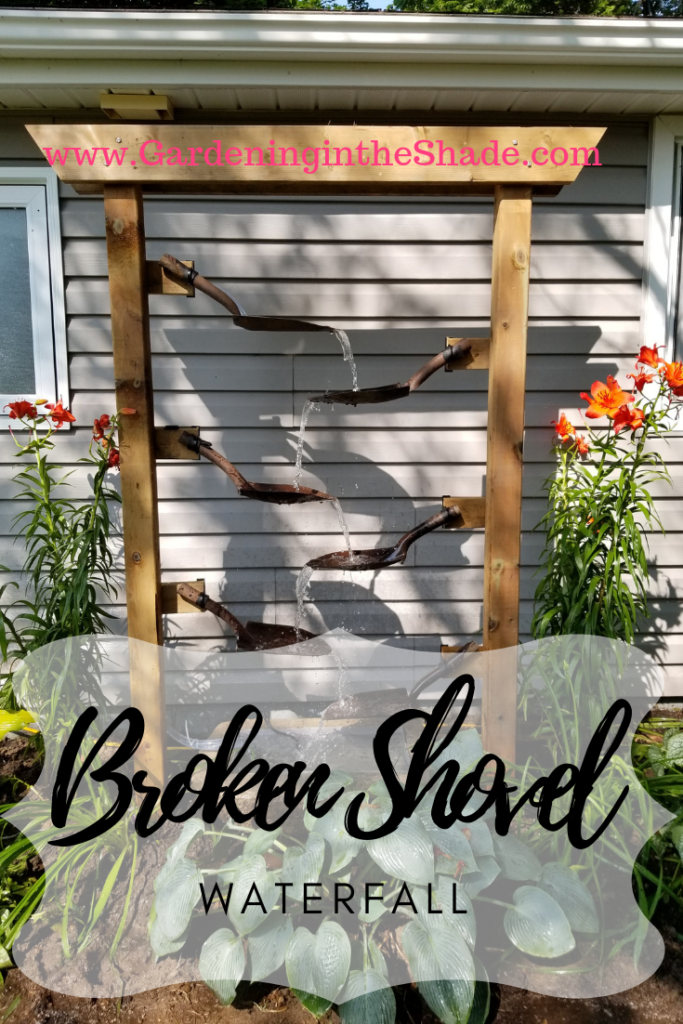
I can’t even tell you how excited and happy I was last night when I finally got everything running and could see that it was really going to work. I just kept saying “My waterfall turned out so freaking cool!” on repeat and annoying my boys.
Here is the space before the waterfall.
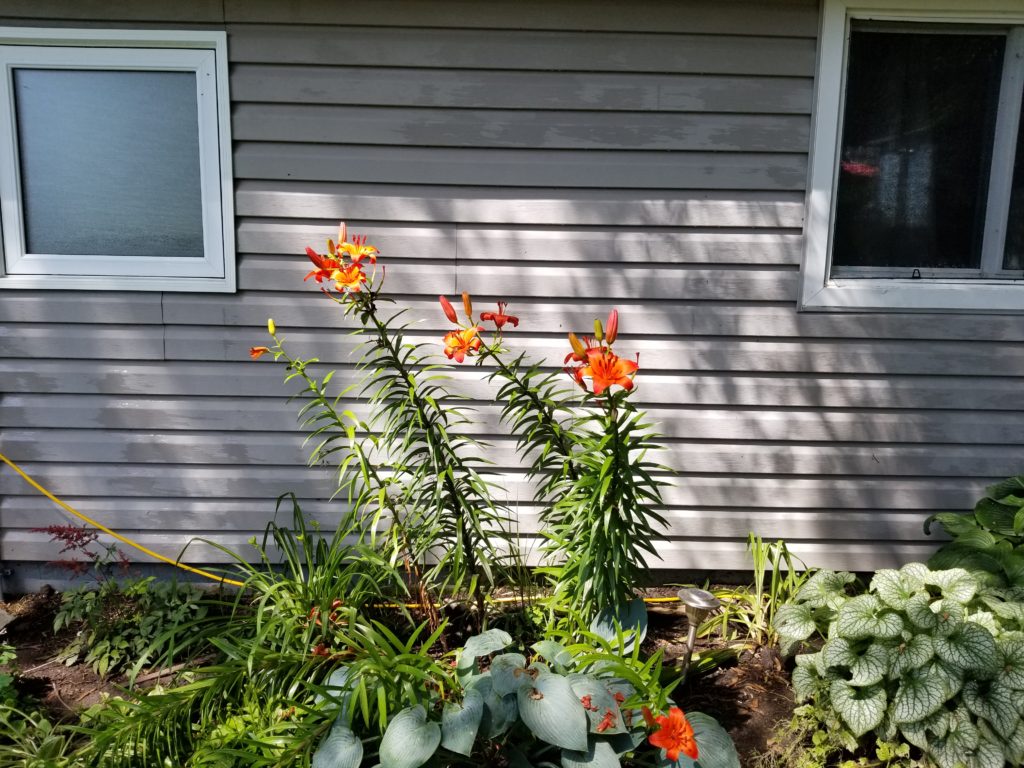
And here it is after.
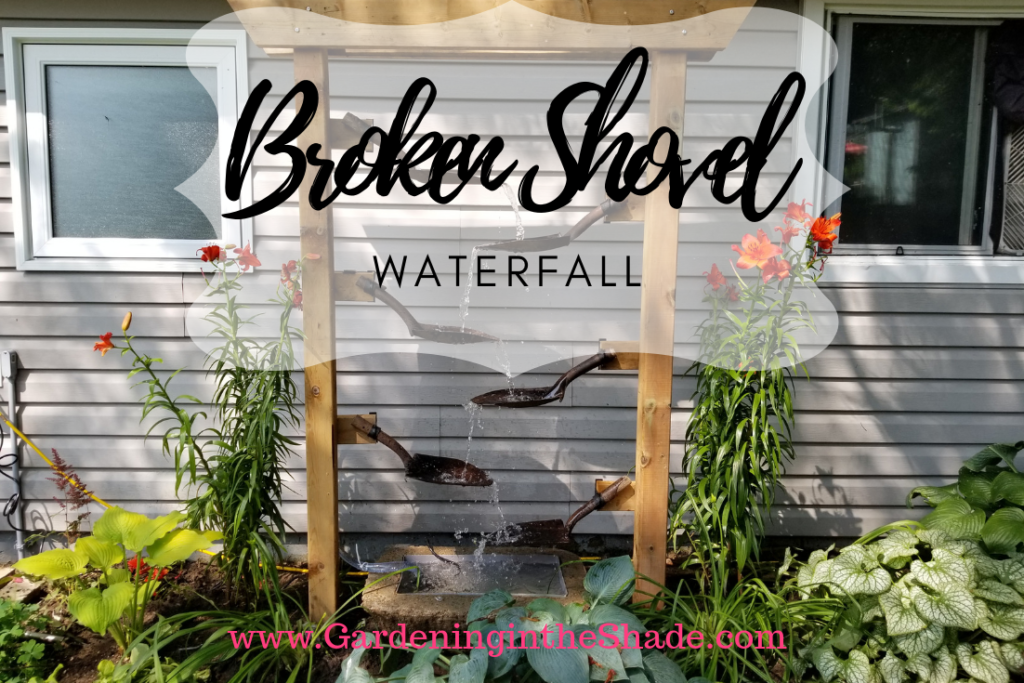
I think the space is much improved. For now, I have the pump unplugged – everything is just so muddy from the rain and me playing around to get the water flow right. Once the ground dries up some the little bit of splashing won’t be a problem and the plants will love it. Those poor gangly lilies finally have something tall to lean up against. Maybe I’ll be able to find some slightly shorter ones to help balance them out.
What do you think? Would you build a waterfall out of broken shovels?

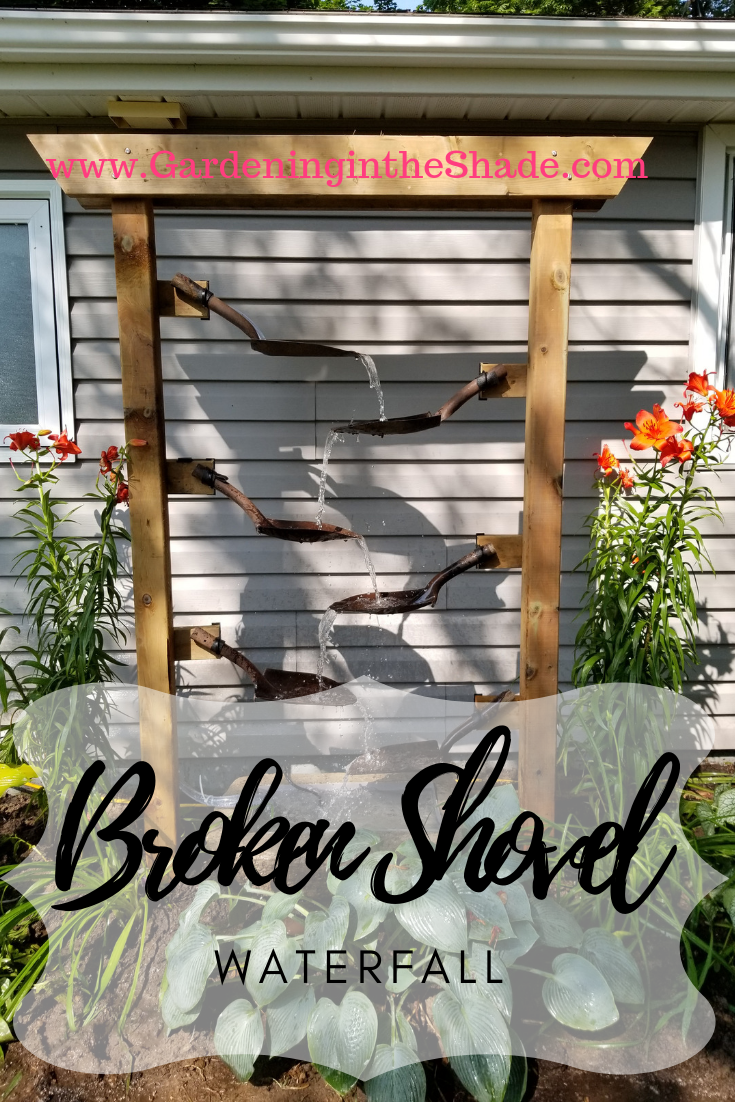
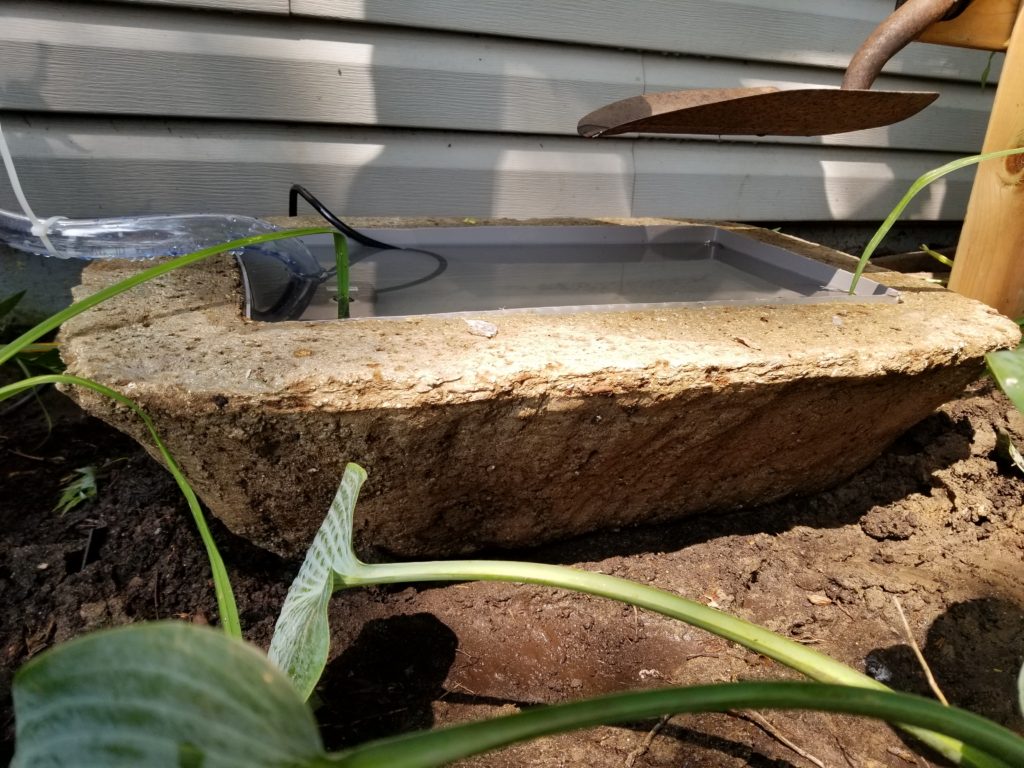 The Basin
The Basin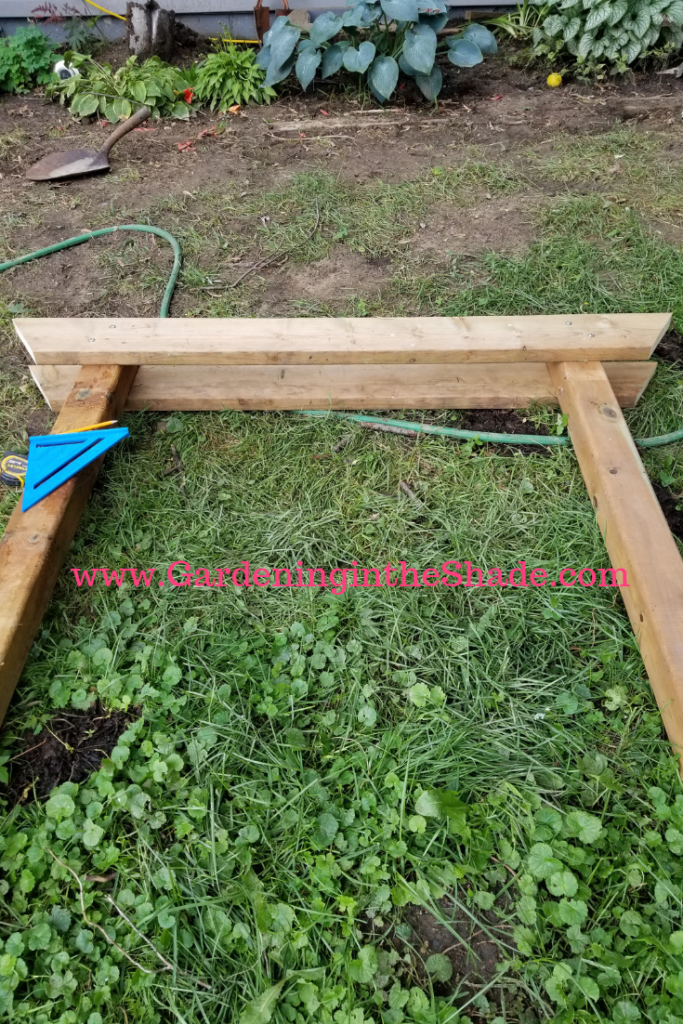 The Waterfall
The Waterfall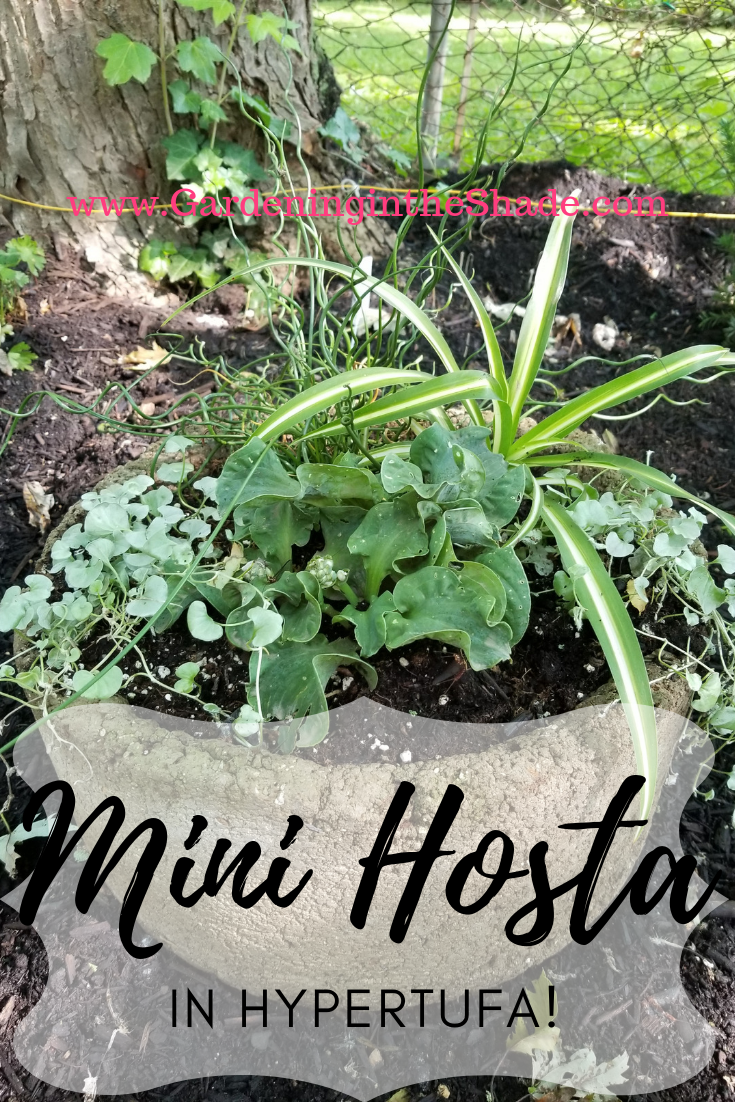
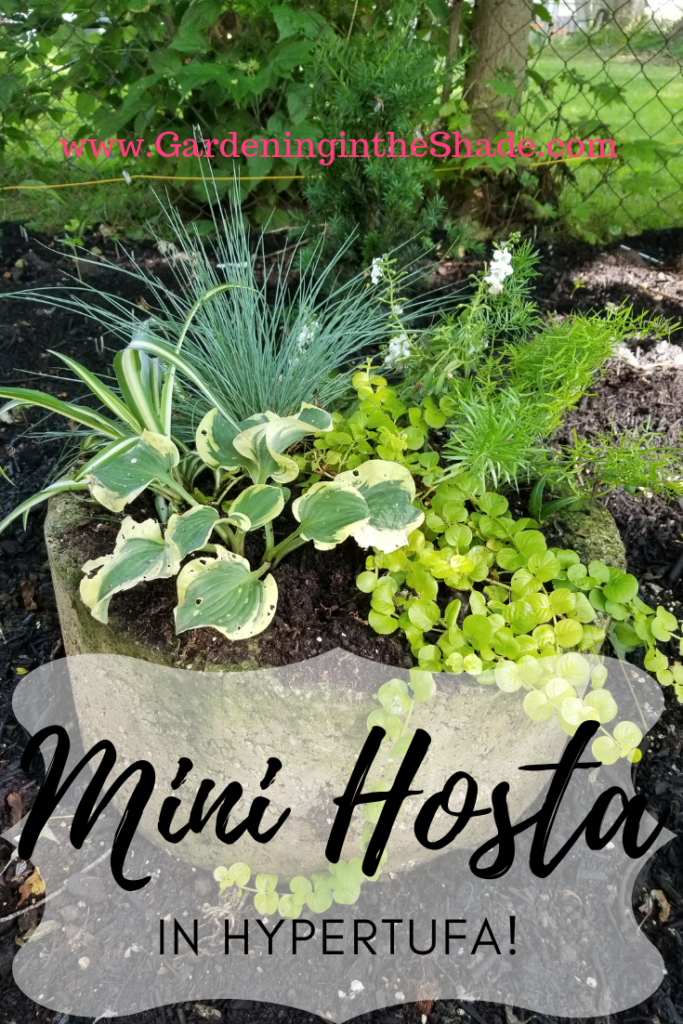
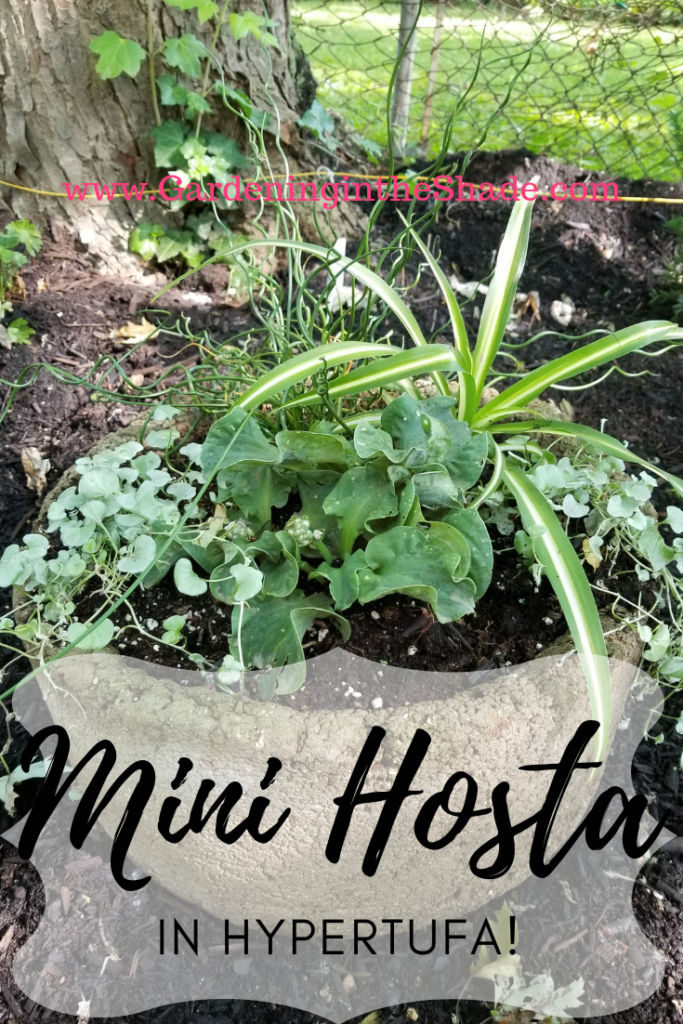
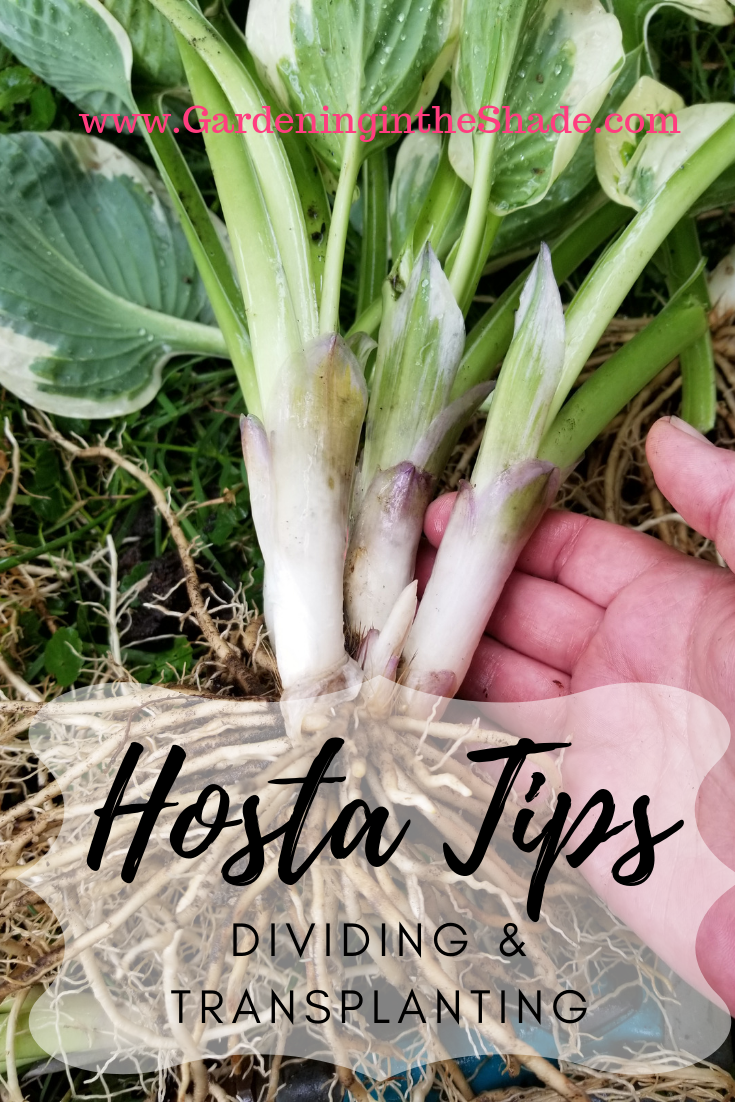
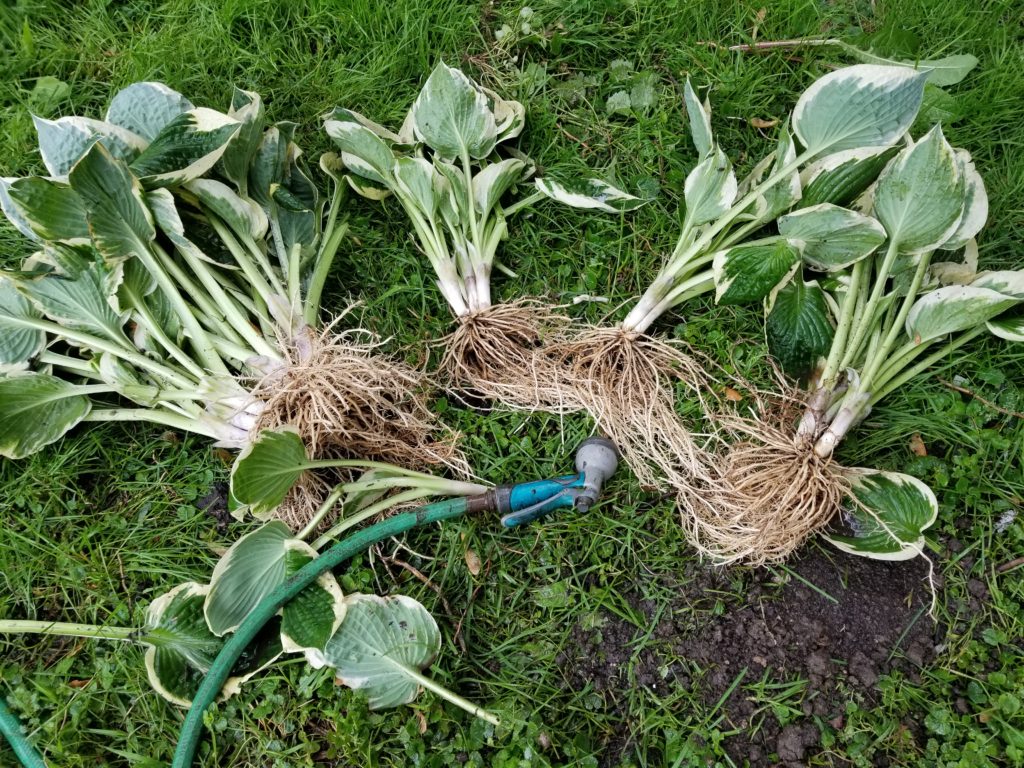 There are a couple of ways to divide hosta, but this is my preferred method. Lift the clump and brush away as much soil as possible. The rinse away all of the remaining soil. With the soil gone, it’s easier to tease apart the roots. I try to have a minimum of 3 eyes per division. Generally if hosta are sold ‘bare root’ they are sold in 2-3 eye divisions so I figure that must be a good number.
There are a couple of ways to divide hosta, but this is my preferred method. Lift the clump and brush away as much soil as possible. The rinse away all of the remaining soil. With the soil gone, it’s easier to tease apart the roots. I try to have a minimum of 3 eyes per division. Generally if hosta are sold ‘bare root’ they are sold in 2-3 eye divisions so I figure that must be a good number.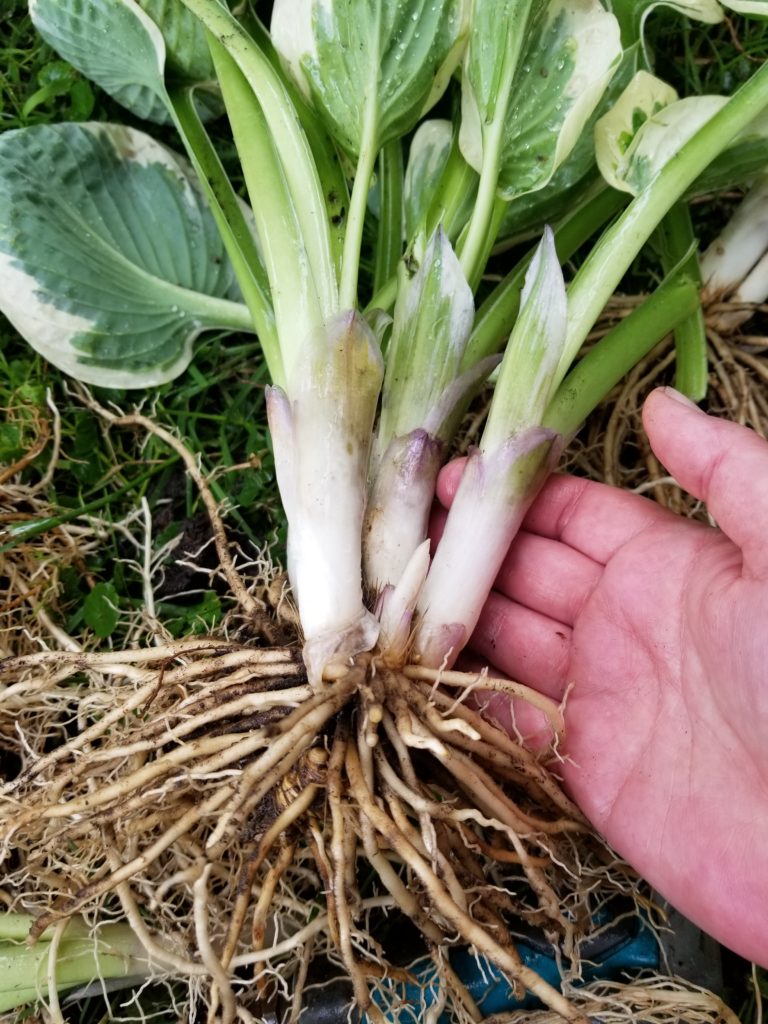
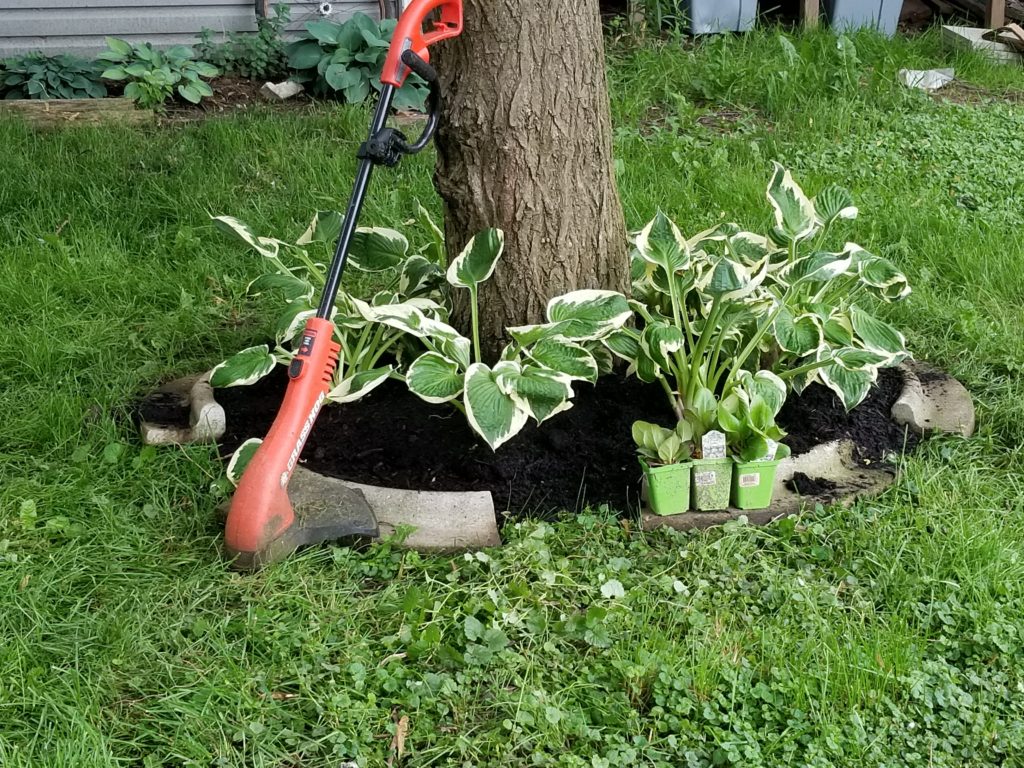
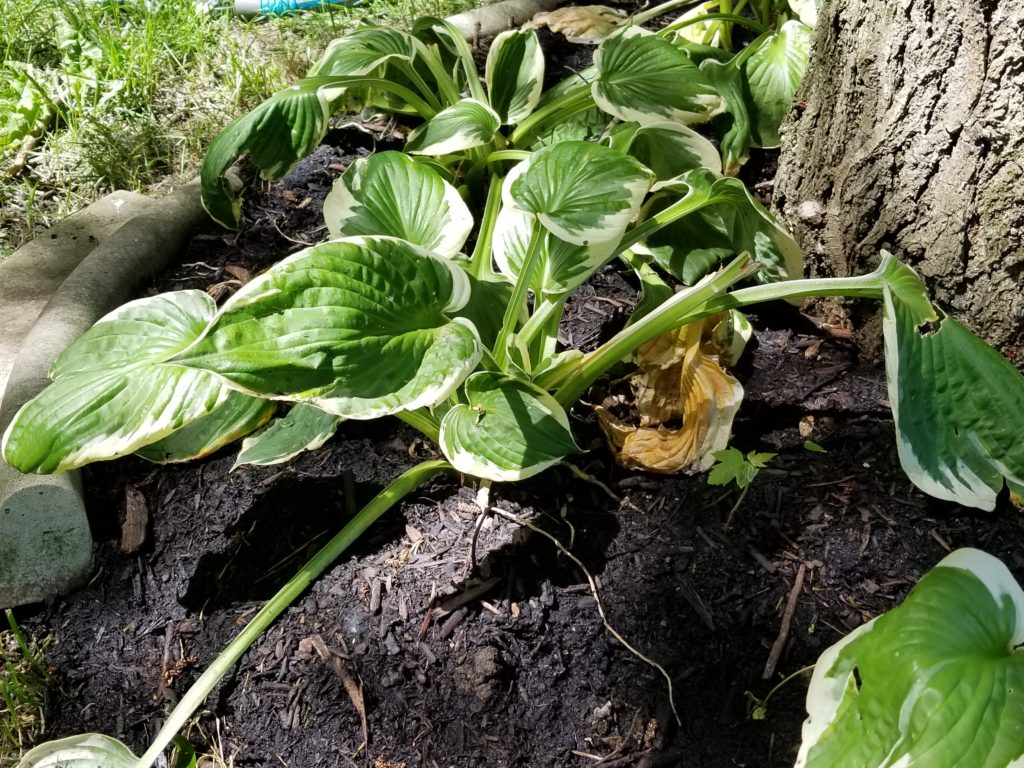
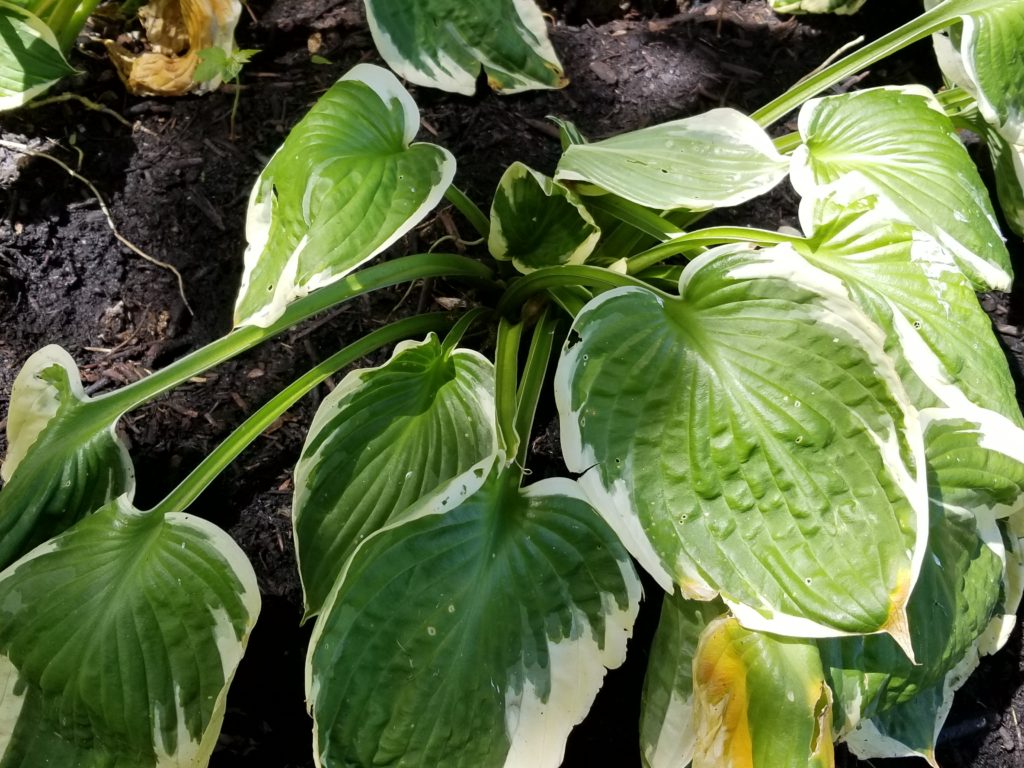
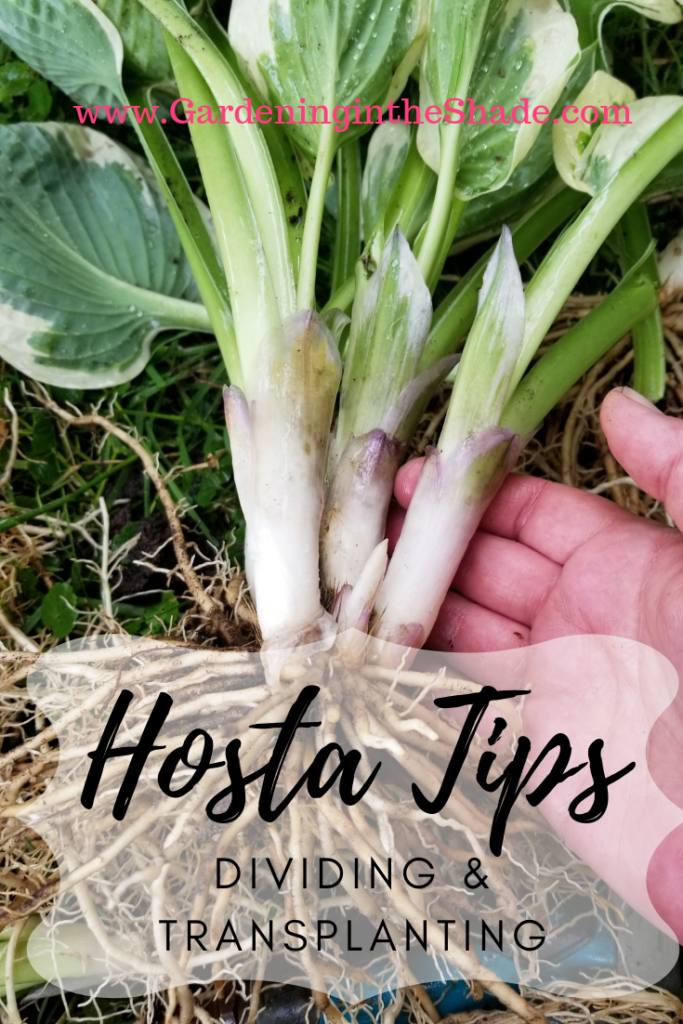 So that’s it! See how easy it is to divide hosta?
So that’s it! See how easy it is to divide hosta?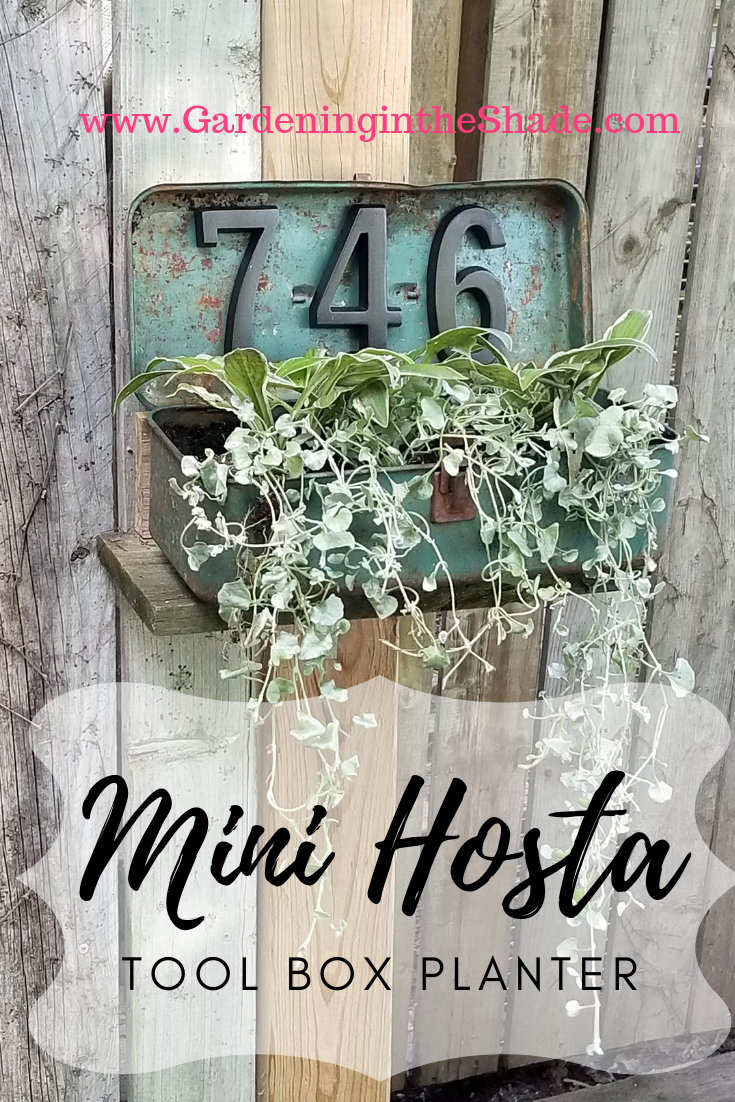
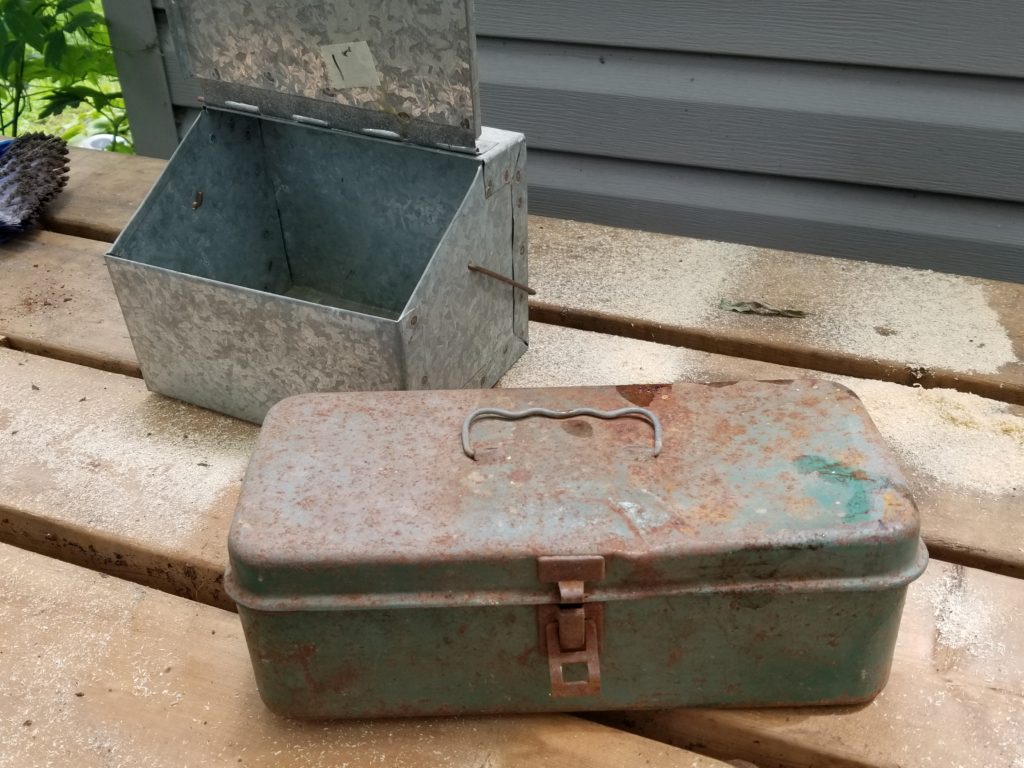 I mentioned a trip to Picker’s Pig Pen in my last post, what I didn’t mention was this fabulous old tool box. It was exactly what I was hoping to find. It has just the right amount of rust and it’s perfectly battered. One of the cutest succulent planters I’ve seen on Pinterest is an assortment of succulents in an old tool box. I needed a tool box so I could reproduce that planter with mini Hosta!
I mentioned a trip to Picker’s Pig Pen in my last post, what I didn’t mention was this fabulous old tool box. It was exactly what I was hoping to find. It has just the right amount of rust and it’s perfectly battered. One of the cutest succulent planters I’ve seen on Pinterest is an assortment of succulents in an old tool box. I needed a tool box so I could reproduce that planter with mini Hosta!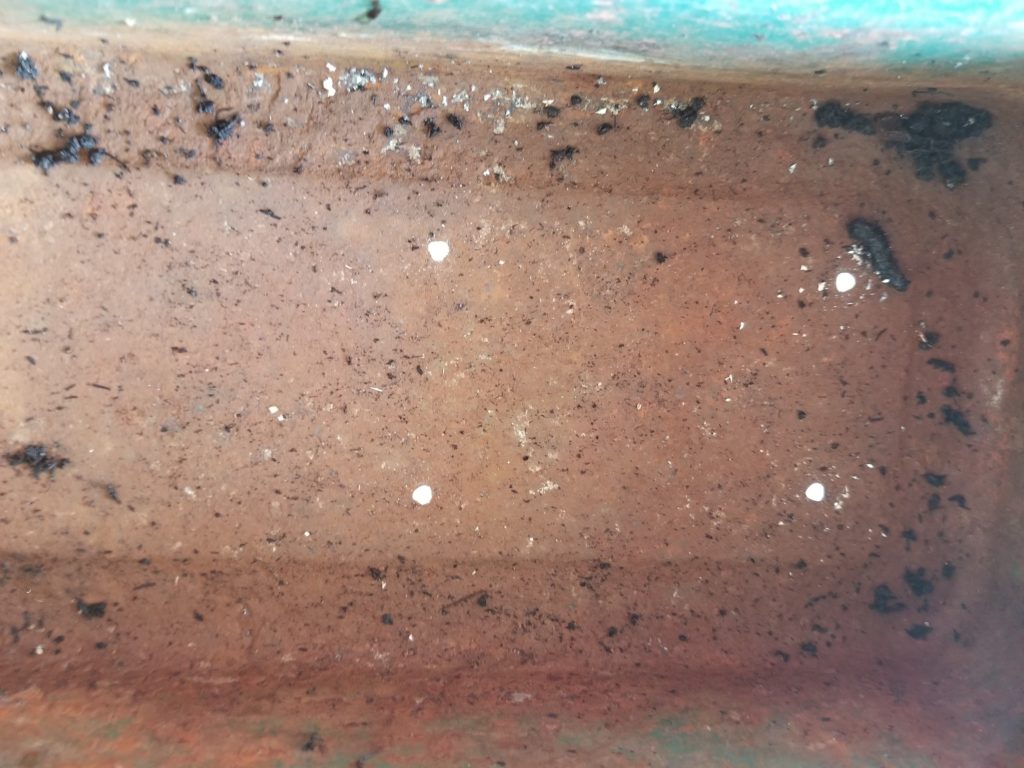 Both metal boxes were cleaned up and I drilled drainage holes in them with a drill bit meant for metal. When you are drilling in metal it helps to have some wood underneath that you don’t mind drilling into. There still might be some burrs, but the holes turn out much neater.
Both metal boxes were cleaned up and I drilled drainage holes in them with a drill bit meant for metal. When you are drilling in metal it helps to have some wood underneath that you don’t mind drilling into. There still might be some burrs, but the holes turn out much neater.